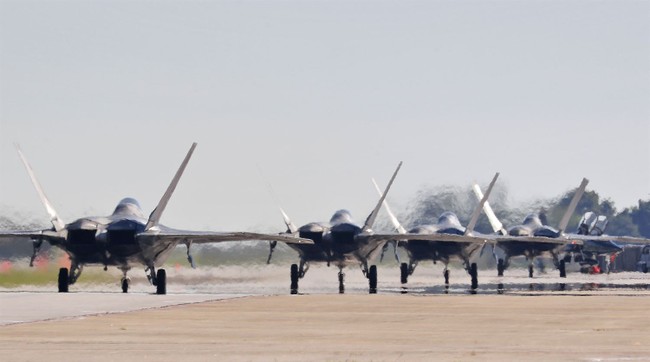Share this @internewscast.com

As World War II neared its conclusion in Europe, the German forces introduced a formidable adversary for the Allied air forces: the jet fighter. Leading this charge was the Messerschmitt Me-262, a powerful twin-engine jet armed with four 30-mm cannons. This aircraft outpaced the American P-51 Mustang, which was hailed as the top piston-engine fighter of the era. Although challenging to defeat in aerial combat, the Me-262 was clunky and sluggish during taxiing, vulnerable during takeoff and landing, and required extensive runway space.
The Allies devised a strategy to target these jets while they were grounded, destroying both the aircraft and their bases. This tactic proved effective.
Attacking an opponent with superior air capabilities, or at least more advanced aircraft, is best done by neutralizing them on the ground. By targeting their bases, the threat can be diminished. With the advent of long-range, precision-guided cruise missiles, such operations are now feasible, even against air bases on aircraft carriers. Enter Shield AI, a company that has developed an AI-powered fighter designed to counteract these strategies.
If this cutting-edge system performs as promised, it could revolutionize the longstanding military adage: “Strike first, strike hard.”
While China boasts about its advanced fighters, skepticism remains warranted regarding claims by the Chinese People’s Liberation Army. However, the sheer number of second-tier aircraft they can produce represents a significant factor. The new American system might just provide a viable solution:
This new system, if it works as advertised, could bring about a whole new iteration of that great old American military truism: “Do unto others, first.”
Shield AI says the jet, called X-BAT, can take off vertically, reach 50,000 feet, fly more than 2,000 nautical miles, and execute strike or air defense missions using an onboard autonomy system known as Hivemind. It’s designed to operate from ships, small islands or improvised sites — places where traditional jets can’t. The aircraft’s dash speed remains classified.
“China has built this anti-access aerial denial bubble that holds our runways at risk,” said Armor Harris, Shield AI’s senior vice president of aircraft engineering, in an interview with Fox News. “They’ve basically said, ‘We’re not going to compete stealth-on-stealth in the air — we’ll target your aircraft before they even get off the ground.’”
China has advanced fighters, or at least, they claim to; everything that issues forth from the Chinese People’s Liberation Army should be taken with a huge truckload of salt. But quantity has a quality all its own, and China does have the capacity to build an awful lot of second-rate aircraft.
This new American system could have an answer:
X-BAT’s Hivemind autonomy allows it to operate in denied or jammed environments, where traditional aircraft would be blind. The system uses onboard sensors to interpret its surroundings, reroute around threats and identify targets in real time. “It’s reading and reacting to the situation around it,” Harris said. “It’s not flying a pre-programmed route. If new threats appear, it can reroute itself or identify targets and then ask a human for permission to engage.”
Of course, giving the keys to a robot would require making sure that its target-identification protocols were dialed all the way in. You wouldn’t want one shooting down a friendly – or an airliner.

















